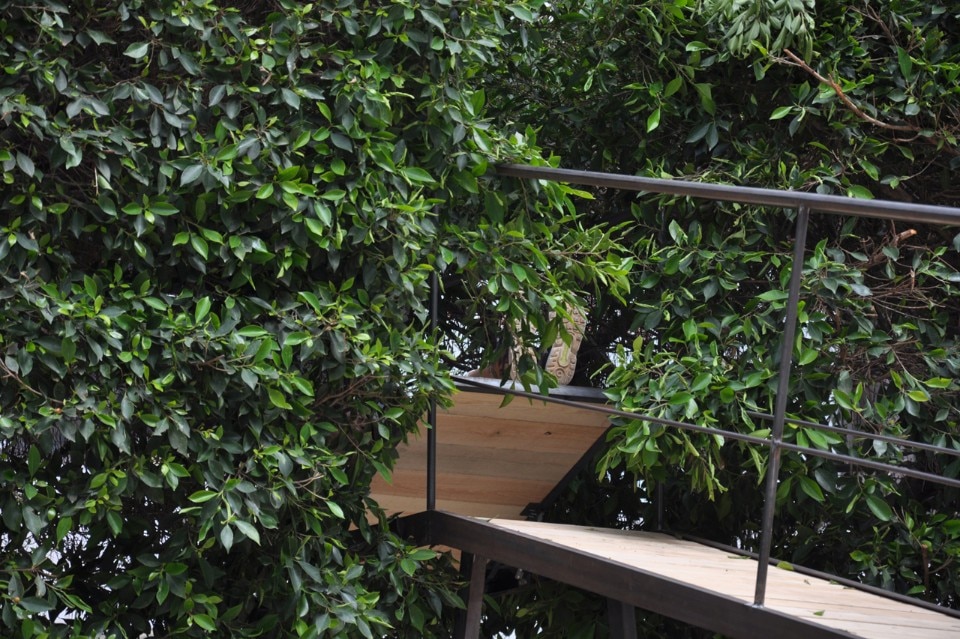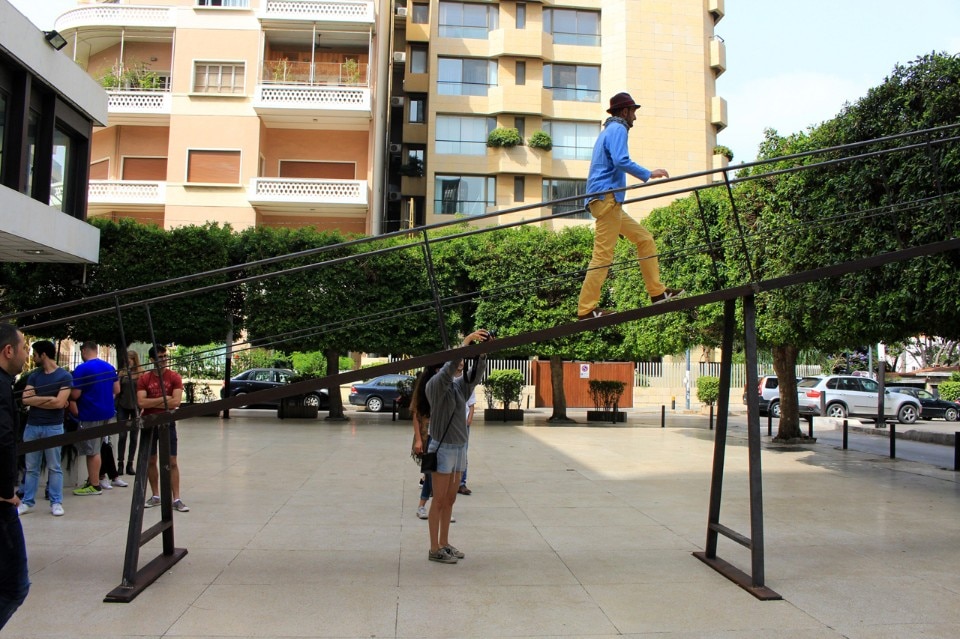
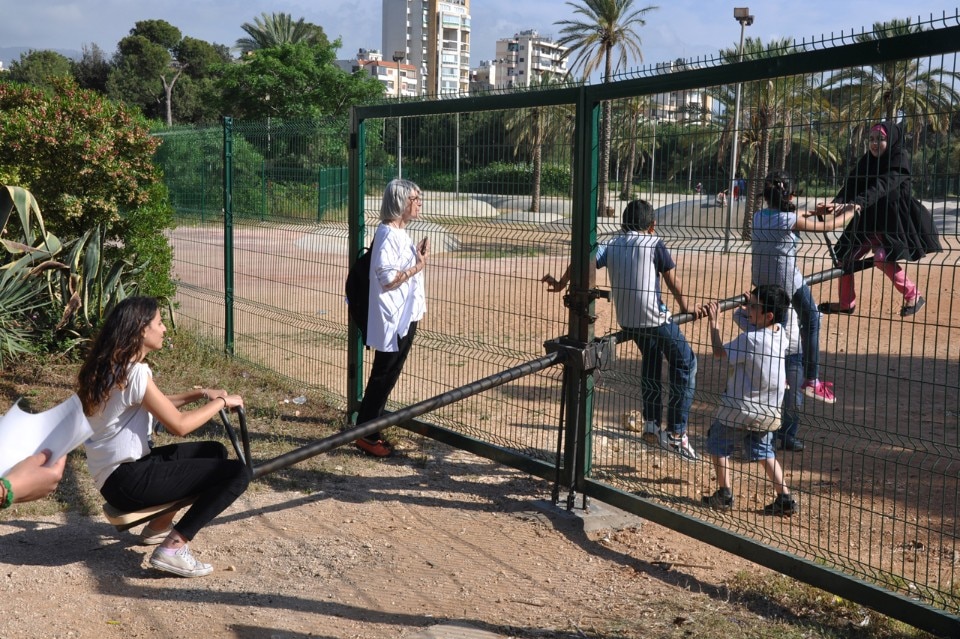
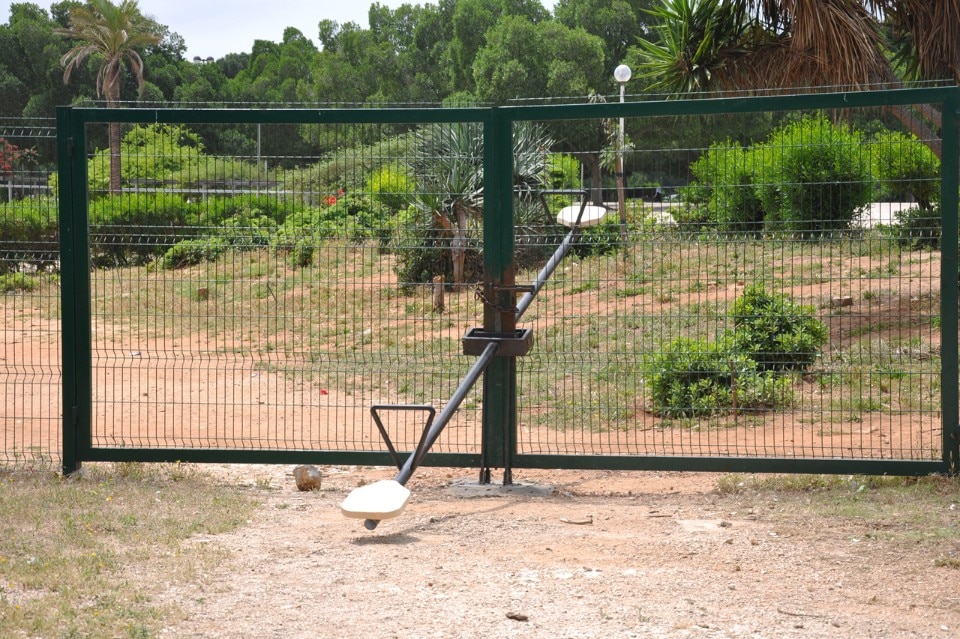
“The Silence project is a pedagogical instrument for the city's inhabitants as well as the designers,” continues Haddad, “It underlines the importance of what is subtle and transitory, and puts into play socio-political issues.” The project aims to train the eye and activate points of urban observation.
“Sma la farjik” (Listen to observe) is the installation on the pedestrian bridge, a location chosen by the students for being particularly noisy and uncomfortable. This urban element crosses the highway without giving adequate access to certain reach a bus stop that is fundamental for getting around the city. Users of the bridge expressed all their annoyance to the students who were there to understand how to develop a project that would be an answer to the needs of the community that crosses the bridge. The quasi-uselessness of the bridge and the paradoxical negation of its function led them to imagine a box in which each passer-by could insert his head for two or three minutes. It offers momentary isolation from the surrounding noise, like ostriches bury their heads in the sand. Message on the outside and inside of the box read: “There is hope,” “There is no escape” and “Your voice can be heard”.
Twenty-two wooden boxes aligned along the pedestrian bridge invite passers-by to stop and listen, to modify the way they use this seemingly useless portion of the city.
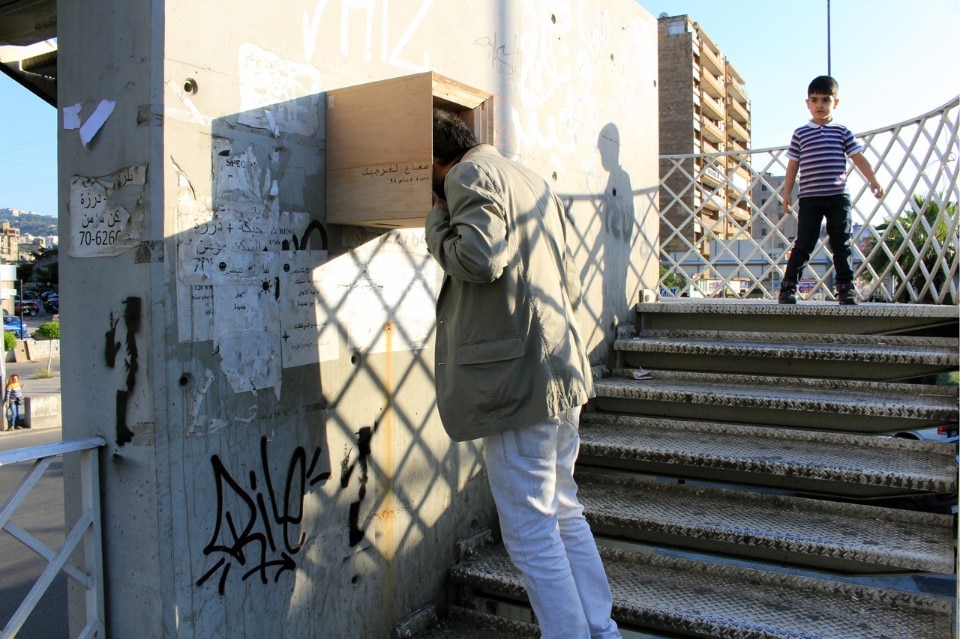
The Silence project connects the two parts by means of a recreational element: a swing hanging directly from the fence. It is an invitation to people on both sides to play together.
How can we redefine a boundary? How can we overcome it? With a smile. Naturally, children were the first to jump onto the swing and clarify how no limit is insurmountable. The title given to the installation is emblematic: “The Silence of the Radio”. Clearly, playfulness that tears down walls was something that worried officials, who requested the dismantling of the swing after two weeks, stating it was too dangerous.
These are examples of a social way of looking at design by marrying the development of an eye for the city with the search for new spaces for action by contemporary projects.

